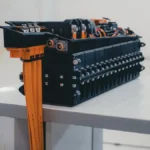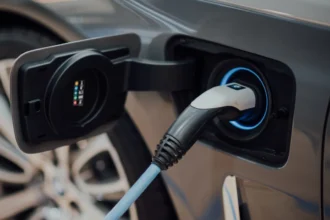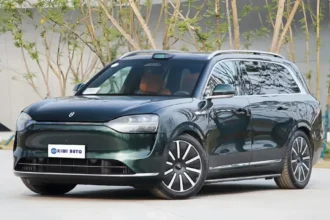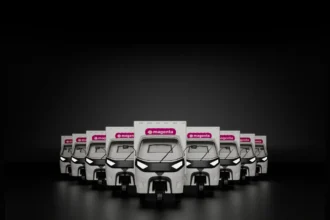Have you ever worried about waiting hours to charge your electric car? This major concern for many drivers might soon be a thing of the past. Chinese electric vehicle maker BYD has just revealed a groundbreaking charging system that works almost as fast as filling up with gas. According to reports from Business Standard and Reuters, BYD’s founder Wang Chuanfu unveiled this new technology on Monday during a special event streamed from the company’s headquarters in Shenzhen, China.
What Makes This Charging Technology Special?
BYD’s new system, called the ‘Super e-Platform,’ can deliver an incredible 1,000 kilowatts of power to a vehicle. To understand how remarkable this is, think of it this way: most home charging stations provide about 7 kilowatts, while even Tesla’s newest superchargers top out at around 500 kilowatts. This means BYD’s chargers are about twice as powerful as the fastest Tesla chargers available today.
What does this mean in real-world terms? The technology can add about 400 kilometers (248 miles) of driving range in just five minutes of charging. For comparison, that’s like adding enough power to drive from Mumbai to Pune in the time it takes to grab a cup of coffee. BYD claims their system can charge a battery from 10% to 80% in only 10 minutes.
The Technology Behind Ultra-Fast Charging
BYD achieves these impressive charging speeds using what they call an “all liquid-cooled megawatt flash charging terminal system.” In simple terms, this means the charger uses liquid cooling to manage the enormous heat generated when pushing so much electricity into a battery so quickly.
The company’s special Blade Battery technology is a key part of this system. Unlike traditional lithium-ion batteries that look like small cylinders or pouches, the Blade Battery is shaped differently and uses a more stable chemistry called lithium iron phosphate. BYD claims this design makes their batteries safer and longer-lasting, even when charged at these extreme speeds.
Another important innovation is BYD’s 8-in-1 electric powertrain, which achieves 89% energy efficiency. In everyday language, this means that almost 9 out of every 10 units of electricity going into the car actually gets used for driving, with very little wasted as heat. Most gas cars, for comparison, waste about 70-75% of their fuel energy as heat.
Real-World Testing Results
| Source | What They Found |
|---|---|
| InsideEVs | The BYD Han L sedan actually reached 1002 kW during testing, confirming BYD’s claims. The car charged from 13% to 65% battery capacity in just 5 minutes, which is remarkably fast compared to current charging standards. |
| EVJoints | Tests showed the charger can add 470 km (292 miles) of driving range in five minutes. To put this in perspective, that’s enough range to drive from Delhi to Chandigarh after charging for the time it takes to use a restroom. |
| Saur Energy International | Their testing confirmed the charger adds about 400 km in 5 minutes, which works out to adding 2 kilometers of driving range every second of charging – faster than anyone has achieved before. |
| All India EV | They reported the charger reached its maximum power of 1 megawatt in just 10 seconds and could take BYD’s new models from 7% to 50% battery in only 4.5 minutes. |
The New Models Using This Technology
BYD is launching two new vehicles that can use this ultra-fast charging technology: the Han L sedan and the Tang L SUV. These cars will be priced from 270,000-280,000 yuan (about 37,400 US dollars), making them relatively affordable compared to many premium electric vehicles with advanced features.
Both models will feature impressive potential driving ranges exceeding 1,000 kilometers (621 miles) on a single charge. To understand how significant this is, it means you could potentially drive from Delhi to Jaipur and back twice without needing to recharge.
Potential Concerns: Safety and Battery Life
While the charging speeds are impressive, experts have raised some concerns about what happens when you push so much electricity into a battery so quickly. Frequent use of ultra-fast charging above 120kW has been shown to reduce battery life compared to slower charging methods.
The long-term effects of repeatedly using 1,000kW charging on battery durability remain unclear. When batteries charge this quickly, they generate significant heat, which is a known factor in battery degradation. BYD claims their Blade Battery technology addresses these concerns, but only time will tell how well these batteries hold up under real-world conditions.
Another concern is safety. Lithium-ion battery fires, while rare, have been increasing in recent years. These fires are often caused by battery damage, manufacturing defects, or extreme charging conditions. BYD insists their Blade Battery design is exceptionally safe, even passing nail penetration tests that would cause conventional batteries to catch fire.
Building a Massive Charging Network
BYD isn’t just launching the technology – they’re building the infrastructure to support it. According to Juniper Research, the company plans to construct more than 4,000 ultra-fast charging stations across China, with the first 500 stations expected to be operational by April 2025.
These charging stations will have unique features to overcome common infrastructure limitations. As reported by CnEVPost, BYD’s Megawatt Flash stations will include built-in energy storage systems, allowing them to deliver 1-MW charging speeds even in areas with limited power grid capacity. This is like having a giant power bank at each station that slowly fills from the grid and then rapidly discharges into vehicles.
The scale of this rollout is significant when compared to competitors. Tesla currently has about 2,000 charging stations in China, while NIO has around 2,700 battery swap stations. BYD’s planned 4,000 ultra-fast stations would make them a dominant player in charging infrastructure.
Impact on the EV Market and Competition
BYD’s new charging technology directly challenges Tesla’s previous advantage in charging infrastructure. While Tesla’s V4 superchargers peak at about 500 kW, BYD’s system doubles that power. In practical terms, BYD claims their system can add 470 km in 5 minutes, compared to Tesla adding about 275 km in 15 minutes.
This development could make battery swap stations like those used by NIO increasingly obsolete. Why wait for a battery swap when you can charge almost as quickly? BYD’s approach also scales more easily, as charging stations are generally simpler to build and maintain than battery swap facilities.
The company has ambitious growth targets, aiming for 5-6 million vehicle sales by 2025. This charging technology could be a key factor in achieving those goals, as it addresses one of the biggest barriers to EV adoption: charging time.
What This Means For The Future of Electric Vehicles
BYD’s breakthrough could fundamentally change how people think about electric vehicles. If charging times approach the convenience of refueling a gas car, one of the biggest objections to EV ownership disappears. This technology could accelerate the global transition to electric vehicles.
For consumers, this means electric cars that are not just better for the environment, but also more practical for everyday use and long trips. The ability to add 400 km of range in five minutes makes EVs viable even for people who can’t charge at home or need to make frequent long-distance journeys.
As BYD expands internationally, this technology could eventually reach other markets, including India, where charging infrastructure remains a significant challenge. If successful, BYD’s approach could set new standards for the entire industry, forcing other manufacturers to develop similar ultra-fast charging capabilities.











